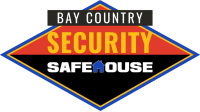
With over 85 million homes across the U.S. using surveillance systems, security cameras have become an essential part of protecting families, businesses, and property. But if cameras are placed incorrectly, you could unintentionally break the law—leading to fines, lawsuits, or even criminal charges. Before installing cameras, it’s crucial to understand video recording laws and ensure legal compliance to avoid potential legal issues.
At SafeHouse in Easton, MD, we believe protection should never come at the cost of your privacy—or anyone else’s. Improper camera placement can raise significant privacy concerns and expose you to legal risks. Here’s what you need to know about Maryland’s security camera laws in 2025 before installing your system.
Know the Security Camera Laws in Maryland
In Maryland, you have the right to install cameras on your property, but how and where you place them matters. Maryland is a two-party consent state, which means it’s illegal to record audio without the permission of everyone involved in the conversation. Audio recording and wiretapping laws are especially strict in Maryland, with consent laws and video recording statutes imposing significant restrictions on surveillance activities. If your security system includes microphones, be cautious—recording voices without consent can get you into legal trouble fast.
Visual surveillance is generally allowed in public-facing areas of your home or business, but it becomes illegal when it invades someone’s reasonable expectation of privacy. Private areas and private spaces, such as bathrooms, changing areas, and bedrooms, are protected by privacy laws and state laws; recording in these areas can be considered illegal surveillance and may result in serious legal consequences. Cameras also shouldn’t be directed into your neighbor’s home or private space—even unintentionally. When positioning your cameras, be mindful of your neighbor’s security camera concerns, avoid pointing at your neighbor’s property, and respect their right to expect privacy. Recording private conversations is prohibited under federal law and privacy laws, and violating these regulations can lead to significant legal consequences.
Best Practices to Install Security Cameras for Safe & Legal Surveillance
To stay compliant, angle cameras toward your own property and away from neighboring windows, yards, or driveways. While not always required, using appropriate notification signage like “Cameras in Use” can help deter suspicious activity and show you’re being transparent about surveillance.
Using outdoor cameras for video surveillance is generally legal when installed on your own property, as long as you respect privacy boundaries and do not record areas where others have a reasonable expectation of privacy.
If you’re installing cameras in rental properties, shared office spaces, or public-facing businesses, it’s a good idea to inform tenants, employees, or customers. Even when the law doesn’t mandate it, transparency builds trust. For best practices, consider the use of home surveillance systems as part of your overall home security. Always balance security with privacy by ensuring your surveillance setup complies with legal requirements and respects the privacy of others.
Get Peace of Mind with Professional Help
Installing security cameras might seem simple, but a professional can ensure your system is set up legally and effectively. Navigating the legal landscape—including federal regulations, homeowners association rules, and requirements for indoor cameras—can be complex for property owners, making professional guidance especially valuable. At SafeHouse in Easton, we help homeowners and business owners choose the right equipment and place it where it offers the most protection—without crossing legal lines.
Need help protecting your property the right way? Visit SafeHouse in Easton, MD, or contact our team to schedule a consultation.

